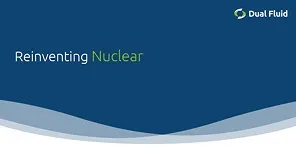
The US wants to be a nuclear nation again: The government’s Advanced Reactor Demonstration Program recently selected two companies to receive generous financial support. The companies Terra Power and X-Energy are to build two different prototypes within seven years, which will supply reliable and shelf-ready electricity. National research institutions are to help with their development. “New nuclear energy is paramount to our clean energy strategy,” said energy secretary Dan Brouilette.
The companies were awarded funding because the jury judged their plans to be feasible, swiftly realisable and competitive. The designs differ fundamentally from most modern-day reactors. There the energy of nuclear fission is used to heat water that circulates through the core to transport heat to the non-reactor unit of the plant. This works best when the water is pressurised. In the non-reactor unit the heat produces steam, which in turn drives turbines to generate electricity.
Instead of water, the TerraPower sodium reactor uses molten sodium as a coolant. Since sodium has a higher boiling temperature than water, the coolant would not have to be pressurised. With this challenging concept TerraPower hopes to reduce the plant’s complexity and cost. In contrast, the X-Energy design uses pressurised helium gas for cooling, which enables a high operating temperature of 750 °C. There are no fuel rods in the reactor core, but graphite “pebbles” containing uranium. Both principles might seem familiar to Germans: They have already been implemented in Germany before. So the selected designs are nothing new, and they have well known disadvantages: Sodium reactors require elaborate safety engineering because the handling of sodium is complex. Pebble bed reactors have a low power density.
Nevertheless: “The fact that the largest western democracy is once again turning to nuclear technology is a very important signal – even if the technologies being funded are not really new,” says Björn Peters, CFO of Dual Fluid. After all, the Department of Energy has announced that a further 50 billion dollars will be used to promote real innovations – i.e. reactors that has only existed as concepts so far. The companies that will benefit are to be announced in December.
Joe Biden also wants to hold on to nuclear power: By 2050, the American power grid is to become completely emission-free, for which he wants to use all low-carbon technologies. In his “Plan for a Clean Energy Revolution and Environmental Justice”, Biden promises to identify the nuclear power of the future – and explicitly mentions small modular reactors (SMR) as an option.
Foto: © fpic/Adobestock

Dual Fluid Company Presentation